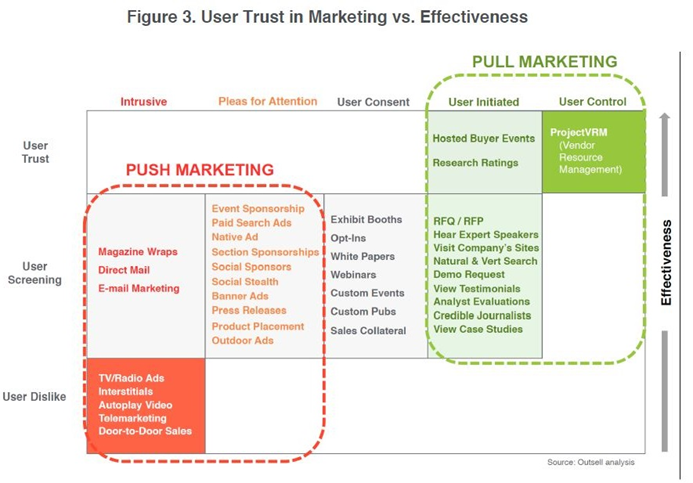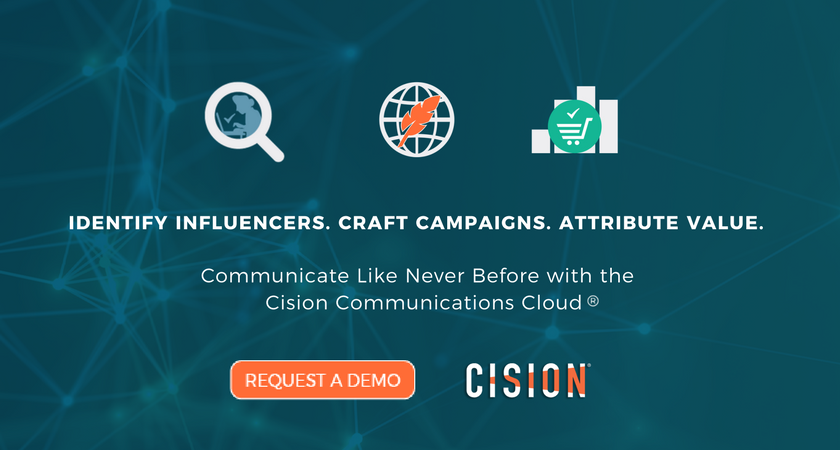First off, what constitutes a small business? According to this handy chart (page 32), the Small Business Administration considers those in the PR industry to be a small business if they earn an annual revenue of $15M or less.
For simplicity, let’s also consider mid-sized businesses with limited personnel or budgeting resources. These SMB (small and mid-sized businesses) and mid-market companies are in a unique situation when it comes to brand outreach and consumer attraction. On the one hand, they can and should be pushing niche interest and audiences in their brand-sphere, as the likelihood of pickup will be stronger with a local connection. On the other hand, spreading brand-awareness is also vital, and they must find ways to maximize their return on investment (ROI) for every dollar spent on marketing and public relations services.
It is imperative for SMBs to not only prove the impact of their efforts on ROI for budgeting and re-investment purposes but also to show that said ROI is contributing to sustained success and strength in the brand to develop and ensure public trust.
Why Earned Media Value (EMV) And Influencers Over Paid Media?
When SMBs are looking for hard returns and metrics that show direct results of their efforts, paid media has been historically difficult to beat. Paid media marketing can be tracked through marketing technology platforms like Marketo, and attributed to quantifiable metrics like shopping cart conversions (B2C) and lead generation (B2B). It’s highly trackable.
Earned media value (EMV) has been traditionally difficult to quantify with ROI being attributed to things like the intrinsic value of owned media platforms — think Unique Visitors Per Month (UVPM) with online websites, reach and circulation figures for print outlets, and Nielsen ratings for broadcast — and the assumed worth of shared material with other vanity metrics like Publicity Value.
So with that in mind, why would a small business focus more budget on a traditionally less transparent bet like public relations than on an easy-to-track, directly-correlated investment like paid marketing? Because public relations equals trust in brands. Let that marinate for a moment. It might seem like it’s overstating the case, but it isn’t.
Grassroots and word-of-mouth campaigns work best for gaining the trust and increasing the confidence a consumer has in a brand. And companies are taking notice. According to a study by Outsell, more than 70 percent of small and large marketing firms rated earned media at least equal to, if not more effective than, paid media. Outsell put year-over-year change in marketing budget mix at +10 percent for social engagement, and positive gains for other earned campaign tactics like PR. Firms are starting to invest, and they’re also beginning to see real results — the average influencer marketing campaign returns $6.85 for every $1 spent on earned media coverage. With companies like Cision implementing new impact models and analytics tools to demonstrate hard ROI on earned media, and show where those conversions are taking place, earned media has earned a spot at the main table with paid and owned — and looks to be the future.
Why Should Businesses Engage With Influencers?
The future is built on a foundation already in use in the present, and for the past century, by the PR industry — building influencer lists. Over the past several decades some of the major players have changed with the evolution of the Internet and most-recently social media, but the concept is still the same — reach out to your audiences with the material they want through avenues they trust.
While today’s PR and marketing culture is overwhelmed with data points and statistics, they have come in awfully handy when determining how content is consumed and used. Tracking tools, like cookies and pixels, as well as social data, have been useful in understanding how consumers use content and help to determine which influencers to target in campaigns. In modern communications, we can now flip the model and use the information we have about our audiences (interests, demographics, geographies) to find suitable influencers that impact those audiences. Gone are the days of just picking influencers out of a hat, per se, and hoping that their coverage would meet the right audience.
What’s Required in Media List Building?
It’s not easy to consistently gather, house and maintain up-to-date information on influencers. It’s especially tricky to avoid straining existing influencer relationships when budget and personnel dedicated to researching and updating of said influencers is limited. These are the two primary small business use-cases for a media database — list-building and maintenance. Over time both are taxing and often require more work and budget than is feasible, as audiences are demanding more personalized experiences in PR.
Primarily, databases provide a source of contacts (and methods to contact those contacts) that create content around a subject and exert influence by way of audiences. Those contacts are thus referred to as influencers, and they can range from traditional magazine editors to Instagram celebrities to broadcast personalities to parenting bloggers. Their effect can vary from moving an audience member (or consumer) to click on a link, register for a mailing, make a purchase or any number of other things, including doing nothing but just consuming the content.
Influencers are essential to any PR, comms or marketing campaign, as they are the engine that drives audiences to act, and they disseminate messages either directly (think sponsored posts) or filtered through their viewpoint (think traditional newspaper features). The amount of information you need to contact an influencer — direct phone, email, social handles, pitching preference, outlet information, history and bio, etc. — can be daunting to research for just one contact. If you’re starting a new campaign and you don’t want to strain existing influencer relationships, then a team is needed to pull in all that fresh data.
Additionally, once that first campaign has been executed there are always updates that need to be made based on results ranging from pitching preferences to opt-outs. Tracking gets difficult quickly — outlet updates, contact moves in the media, individual contact details and pitching tips, as well as general context-type of information like coverage and work history, are all part of keeping up quality relationships.
A database provides, first and foremost, ease of use and peace of mind. Tracking top influencers and keeping their information up-to-date is removed from the busy dockets of SMBs, allowing for time better spent honing pitching material and developing actual relationships with influencers.
Speaking of “ease of use,” while it’s easy to maintain a list of influencers with a database (since you’re not out there worrying about getting all the details), it’s also just plain easier to find those contacts that are pertinent to your audiences. From traditional beats and coverage to Twitter audience data and impact rankings, today’s databases are more than just a Rolodex of names and info — they’re tied into real-time conversations and show the actual effectiveness of influencers on audiences.
How Can SMBs Measure Success?
Put objectives in place before launching campaigns by setting benchmark metrics and attainable goals.
PRSay blog contributor, Ashley Walters, APR, offers excellent advice for SMBs to think about, “Before you send one pitch email, make sure you set your success criteria. If it’s simply awareness, impressions are easy to measure. But if you’re interested in business goals like increasing sales, you’ll want to put tracking in place to capture those important metrics.”
Exact ROI metrics like the aforementioned shopping cart and lead generation conversions are starting to become attainable for the earned media space through products like Cision Impact. By gaining more information about your target audience and their ideal influencers, brands can create more compelling stories and drive business results.
![]()
Most Recent Posts
Cision Blogs Topics
-
Communications Best Practices
Get the latest updates on PR, communications and marketing best practices.
-
Cision Product News
Keep up with everything Cision. Check here for the most current product news.
-
Executive Insights
Thought leadership and communications strategy for the C-suite written by the C-suite.
About Kevin Miller
Kevin Miller is a Product Marketing Manager for Cision. He develops marketing strategy and messaging, focusing on influencer impact and related trends within the comms and media industries.


